MARKET OVERVIEW
The global industrial sensors market is the backbone of current industrial technology, automation, and control, and monitoring systems in every sector. Industrial sensors are agents of optimizing processes, increasing efficiency in operations, and guaranteeing safety in manufacturing, energy, transportation, healthcare, and many more. The sensor market is colossal with several types of sensors that are found in the market. Each one of these caters to specific industrial applications such as pressure, temperature, proximity, motion, and chemical sensors. The global industrial sensors market breaks all the norms of traditional space, as IoT, AI, and big data analytics are part of the deal. These technologies have revolutionized the function of the sensor from mere data gathering, whereby sensors simply gathered data, to an intelligent data gathering, processing, and decision-making appliance that can make decisions in real-time. Sensors in industry enable the free communication of machines, systems, and humans, and are crucial to realizing smart factories and Industry 4.0 projects.
Such industrial applications will require sophisticated sensors capable of fulfilling the exacting demands of precision, reliability, and durability in industrial processes. The sensor applied in such situations will have to resist harsh temperature conditions, brutal pressure, corrosive environments, and other stressful factors without compromising its functionality. The global industrial sensors market will be expected to make similar demands while providing robust performance solutions to various needs, enhancing operational efficiency and process effectiveness.
The developing nations will be the core of the future global industrial sensors market. The emerging economies will industrialize and develop their infrastructures, and the adoption of sophisticated sensor technology will increase to build productivity and competitiveness. The mature markets will concentrate on the upgrading of existing infrastructure to include the latest features and to meet changing regulatory requirements.
Indicative of this shift toward sustainability and energy efficiency in industry will be the market direction. In these lines, industrial sensors will play their part in monitoring and controlling energy usage, waste management, and emissions, all with a very high degree of accuracy. As such, innovations in sensor design and functionality focusing on environmental concerns are to be seen against a market backdrop that supports the global sustainability agenda.
The global industrial sensors market will continue to be highly competitive due to ongoing research and development in sensor performance and functionality. Manufacturers of sensors, technology suppliers, and the end-users would combine to work towards customized solutions suited to various industrial applications. The potential use of industrial sensors would continue to increase with improvements in wireless communication technologies, enabling increased flexibility and scalability.
In the years to come, the destiny of Global Industrial Sensors will be shaped by flexibility within a paradigm and technological innovation. With the wave of digitization passing over industries worldwide, it is only natural that the use of sophisticated sensors would be maximized for numerous applications to complement the building blocks of contemporary industrial settings.
The market will continue to shape itself for rising needs. It will pave the way toward innovation with myriad approaches in which industries can increase efficiency, safety, and sustainability in their processes and technology. The overall view of the Global Industrial Sensors captures the dynamic nature and expansive scope it has regarding shaping industrial processes and technologies.
Global industrial sensors market is estimated to reach $53,191.62 Million by 2032; growing at a CAGR of 8.7% from 2025 to 2032.

GROWTH FACTORS
The global industrial sensors market is on a roll in the next few years with growth from the amalgamation of technological advancement and changes in the requirements of the industry. Increasing the use of Industry 4.0 and IoT, there has been an upsurge in the requirement for real-time monitoring and efficient data collection. Industrial sensors have a central position in this. Manufacturers are learning about the process, efficiency, and wastage reduction using them. This change is not only modifying conventional operating but also results in smarter, automated industry operation systems.
Predictive maintenance is indeed one of the major drivers expanding this market because of the greater emphasis to realize predictive maintenance for the equipment as well as any other equipment within an organization and, in turn, for determining the likely problematic issues prior to downtime causing them to turn into expensive results.
It not only reduces the frequency of interruptions but also assists in reducing operating expenses. This, in turn, becomes the core strategy of new industries. With emphasis on cost-effectiveness and seamless operation on the rise, industrial sensor demand will skyrocket in the coming future. Huge investment at the beginning is still a big turn-off for some other companies, particularly small and medium-sized enterprises, on pursuing new sensor technologies.
Moreover, getting sensors to not conflict with older industrial systems poses challenges. Many of the legacy systems were not designed with modern sensor integration in mind, hence complications and added costs during the adaptation process. Overcoming these will be key to ensuring widespread adoption of the industrial sensors. In spite of the gigantic hurdles in the path, the future of the industrial sensors market appears to be bright and cheerful, particularly in developing countries. Energy-saving and automatic processes open up new avenues in the ever-expanding uses of intelligent sensors. They are being used more and more to make production more efficient, reduce energy consumption, and to enable practices that are more sustainable.
These technologies are fertile ground for emerging economies because they are emerging and rapidly being industrialized. The demand is being fueled through investments into smart factories and automated systems. Much of the demand has emerged from new-age industries. global industrial sensors market at Growth Cusp The industrial sensors market is expected to witness transformational growth, overcoming high costs and integration issues at least temporarily, with improved efficiency, predictability, and optimization of energy offering significant advantages. With the advancement of technology and a focus on sustainability, the market is expected to boom, providing huge opportunities for businesses to innovate and adapt. As industries continue to evolve, the role of industrial sensors will become even more critical in shaping the future of manufacturing and automation worldwide
MARKET SEGMENTATION
By Type
The global industrial sensors market is anticipated to increase tremendously as industries are moving toward utilizing advanced technologies for maximizing efficiency and accuracy in operations. The sensors find applications in different fields and provide solutions for monitoring, control, and automation. Firms can maintain precision in operations, reduce wastage, and enhance overall productivity through the applications of industrial sensors.
Sensors can be divided into three: there are sensors with VDUs, or specified purpose sensors. Level sensors are critical in the oil and gas industries, where certain fluid levels need to be kept. Temperature sensors are employed by the majority of manufacturing facilities due to the strict temperature control needed in order to construct quality product components. Gas sensors can not be replaced as they are critical elements for monitoring toxic gases in chemical plants and mining industries to prevent losses from accidents and to satisfy environmental requirements for safety.
Pressure sensors, which need to be applied in industries like the automobile and aeronautical industries for the measurement of hydraulic and pneumatic systems so that the working system could be optimized, will further allow the application of position sensors in robotic and equipment aligning machines, which are used today more with the process of industrial automation.
Humidity and moisture sensors are mainly used in agriculture and food production for humidity control in those systems. Flow sensors are used to guarantee that liquids or gases are delivered appropriately. This is necessary in the fields of water management and healthcare. Applications of image sensors are revolutionizing manufacturing through its use in quality control and vision-based automation. Force sensors, as the name says, measure the applied forces; they are indispensable in testing and assembly lines for checking structural integrity and precision. The future looks promising for the global industrial sensors market given the recent innovations in the technologies of the Internet of Things and AI.
The sensors would be interconnected to smartphones and computers in scenarios which are driven forward by better supply of powers, innovation and also the higher growing smart sectors. Industries may greatly depend upon collecting data as well as assesses data for a proper time period for getting accurate decisions in that may make ways for costs being cut-off while increasing efficacies. The role of industrial sensors is sure to increase as global industries work toward sustainability. They monitor energy usage and minimize emissions to ensure eco-friendly practices. In light of the focus on innovation and the collaboration between manufacturers, the global industrial sensors market will play a huge role in the future of industrial automation and efficiency.
By Technology
The global industrial sensors market is the bedrock of innovation and operational efficiency in modern industries. These sensors, often called the backbone of industrial automation, are now indispensable in monitoring, measuring, and transmitting data in real time. The importance of industrial sensors in the future of manufacturing, logistics, and other areas is becoming increasingly evident with technological advancements.
This market will expand its reach into various other industries across the globe by penetrating the advancement of specific technologies like MEMS and CMOS Technology. MEMS technology has been a significant enabler in the growth of industrial sensors. Compact in size, MEMS technology is cost-effective and allows for precise data measurement in devices where space is limited. The MEMS-based sensors support applications such as pressure measurement, temperature monitoring, and motion detection. Industries depend on such smart, compact, and smaller devices.
Therefore, the growth in the global sensor market will heavily rely on the advancement of MEMS technology in the future. In comparison, CMOS technology has an important role to play in developing capabilities related to sensors particularly with regard to the imaging and optical applications. On a large scale, energy efficiency and the speed of a CMOS-based sensor are significant advantages behind their widespread use in quality control manufacturing and in visual surveillance systems with improved visual information acquired. The evolution of CMOS is also moving towards more high-resolution, low-power sensors to meet the objectives of diversification of contemporary industries and future industrial demands. This CMOS technology development will therefore make the technology relevant in the future.
In the future, the global industrial sensors market will boom as industries focus on connectivity, automation, and sustainability. The combination of these sensors with technologies such as the Internet of Things (IoT) and artificial intelligence has the potential to unlock unprecedented opportunities. For instance, predictive maintenance powered by advanced sensors can significantly reduce downtime and optimize operational efficiency. This push towards green practice will likely influence the development of sensors that measure emissions and resources used.
In short, the global industrial sensors market is expected to expand at a great rate with the development in MEMS and CMOS technology. Technologies will keep on revolutionizing industries and providing solutions to existing as well as future problems. The market is bound to grow in making industries smarter, more efficient, and sustainable.
By Application
The global industrial sensors market has a steady growth that is based on the diversified applications in the various industries. Therefore, with technological advancements, automation, and growing needs to have efficient and smart systems, growth will continue to gather momentum in the coming future. The major applications in this market are Process Automation and Discrete Automation, both of which contribute significantly to the productivity enhancement and process optimization in industries. Process Automation involves the use of sensors to monitor and control processes in industries such as chemicals, pharmaceuticals, and food production.
As the world progresses towards smarter manufacturing, the need for precision and reliability in monitoring complex processes will increase. Sensors that can provide real-time data and detect anomalies will be essential in ensuring smooth operations, reducing downtime, and improving safety. In turn, the more industries are shifting towards operation-executing systems through minimal human interference, so would be their demand for these sensors. The integrating IoT element with the manufacturing system in Industry 4.0 will only add to further demands for superior sensors in the process automation application. It is in this ability that these sensors will collect and transmit data to be analyzed by the business, leading to more efficient processes and reducing costs.
The other application is Discrete Automation. This application refers to using sensors in the manufacturing of automobile industries and assembling of electronics to monitor individual tasks or components. As production lines continue to become highly automated, sensors are becoming much more advanced, allowing them to measure a wide variety of variables such as temperature, pressure, and motion. This helps machines perform tasks with accuracy and within scheduled time. Sensors will be advanced in the future of discrete automation, and the machines will have the ability to perform tasks autonomously and more efficiently. In manufacturing, the rising tide of robotics and artificial intelligence will also drive the demand for advanced sensors that can be utilized to improve these technologies in delivering even greater levels of accuracy.
The global industrial sensors market will grow as both Process and Discrete Automation applications extend their growth across many industries. The market will also be driven by further advancements in sensor technology and growing demand for smarter and more efficient systems. As more automation solutions find their ways into industries, dependence will only heighten on these sensors, ensuring that the market remains a necessary part of growth and innovation in industries for years to come.
By End-Users
The industrial sensors market is expected to rise in the near future across a number of industries around the world. Growth can be attributed to increasing demand for automation, monitoring, and control systems in a wide variety of applications. Industrial sensors offer real-time data and accurate measurements of machines, systems, and processes. It plays a significant role in industrial environments for efficiency, productivity, and safety.
As businesses embrace technological advancement, the immense demand for industrial sensors will be the one to dictate the future of industrial activity. Manufacturing is one of the most diversified and largest core industries that employ industrial sensors. Increasingly, manufacturing factories are embracing automation systems in efforts to enhance efficiency in production and reduce mistakes made by humans. Sensors are made use of to monitor various parameters in order to keep optimum levels of the machinery so they continue to work under best operating conditions.
In future, there would be hundreds of smart sensors that can talk and inform predictive maintenance alerts in manufacturing units. This would ensure smooth operations with lesser break downs that leads to cost saving and increased out put.
Oil and gas remains one of the key industrial users of sensors. Examples include monitoring equipment, leakage detection, measuring pressure, and ensuring safe operation of oil and gas production operations. The industry will continue to experience an expanding need for advanced sensors, primarily due to the growing environmental issues and stricter regulations in the near future. For example, detection sensors for gas leaks or hazardous materials would be of prime importance for the prevention of accidents and safety. Similarly, it would become highly important for an equipment change.
Sensors within the chemical and pharmaceutical industries in industrial settings would ensure product quality and safety. Chemical reactions could be monitored, temperatures controlled, and variables tracked for the quality of products delivered. As time continues to pass, these industries will continue to require even more accurate real-time sensors for a closer view of all processes at work. Adding sensors into data analytics will provide clearer outcomes in processing while increasing efficiency and reducing waste.
Industrial sensors also form a critical aspect in the energy and power sector to optimize energy generation and distribution. As there is heightened use of renewable energy sources and smart grids, the sensors will be more intelligent to measure the efficiency of solar panels, wind turbines, and energy storage systems. Sensors will be used far more in tracking the energy usage pattern, and consumers and companies will be able to reduce waste and enhance overall efficiency in energy usage.
Industrial sensors also depend on the mining industry for tracking environmental conditions and the health of equipment used in mining to protect employees. As mining operations have increased mechanization, it is possible that the use of sensors will be on the rise with real-time monitoring of key equipment for failure prediction and minimizing downtime with the safeguarding of workers from hazardous atmospheres. The global industrial sensor market seems to be bright about the future with the economy growing and developing innovation in every industrial sector. At the point when businesses will accept newly emerging technologies, then in turn, those will become an integral part of modern industrial systems and operate their businesses. Advances in sensor technology will continue the evolution of the industrial sensor market and create smarter and more integrated capable sensors that transform industries.
|
Forecast Period |
2025-2032 |
|
Market Size in 2025 |
$30,031.68 million |
|
Market Size by 2032 |
$53,191.62 Million |
|
Growth Rate from 2025 to 2032 |
8.7% |
|
Base Year |
2024 |
|
Regions Covered |
North America, Europe, Asia-Pacific Green, South America, Middle East & Africa |
REGIONAL ANALYSIS
The global industrial sensors market has seen rapid growth. Regional distribution, however, has proven to be crucial in shaping the way the industry develops. It is rather informative to distinguish the market based on regions regarding the growth and development prospects and the difficulties that the regions may have to face in the coming days. It has become highly significant for future-focused stakeholders interested in tapping the available opportunities offered by this market.
North America holds the largest part of the global industrial sensors market. Sophisticated technology profile continues to keep the U.S. at the forefront in the matter of industrial automation and use of sensors across various industries, such as manufacturing, healthcare, and energy. In this case, the overall progress of the continent is facilitated by Canada and Mexico, both adopting smart technologies in the best ways for maximizing industrial operations. The North American market will likely continue to grow as demand for automated systems and real-time monitoring continues to rise, spurred by advances in sensor technologies and a move toward more energy-efficient industrial processes.
The region is known for its strong industrial base, including automotive manufacturing, energy management, and food processing. Countries such as Germany, France, and Italy are presently dominating sensor development, while taking serious strides in the context of industrialization through Industry 4.0 technologies like IoT and smart manufacturing. Although the UK is facing some uncertainties related to economic policies due to Brexit, it remains one of the more crucial players in the international arena of the industrial sensor market, especially in the automation and precision engineering segments.
The industrial sensors will be in huge demand as Europe continues to focus on sustainability and green energy. Asia-Pacific countries, including China, India, Japan, and South Korea, will see a significant increase in the industrial sensors market. China is one of the major manufacturing and electronics production hubs and, therefore, holds a strong position in the market for sensors, especially in its shift towards more intelligent industrial practices.
Other technologies and automation of industries such as automotive and robotics in Japan and South Korea will also fuel demand for industrial sensors. The growing tendency of India toward industrialization and urbanization will also tend to increase the need for advanced sensors in the construction, agricultural, and transportation sectors. Although the industrial sensors market is at a developing stage in South America, Brazil and Argentina are approaching the adoption of more sophisticated technologies in their industries. The integration of sensors to monitor the environmental factors, industrial processes, and safety standards would slowly gain adoption as mining and agricultural industries expand in the region.
Growth prospects are also seen in the Middle East and Africa industrial sensors market. The region's emphasis on oil and gas, construction, and energy infrastructure fuels the demand for sensors that can enhance processes, track equipment, and protect against hazards. Saudi Arabia, the UAE, and South Africa are particularly engaged in embracing technologies that make industrial processes more efficient and sustainable.
As the region is looking to diversify its economy and invest in smart city projects, the role of industrial sensors will be even more important. As we look forward, regional characteristics, such as technological adoption, industry needs, and economic priorities, will continue to shape the global industrial sensors market. Every region presents its own opportunities and challenges, and the ability to understand these variances will be essential for those companies looking to increase their footprint in this expanding market.
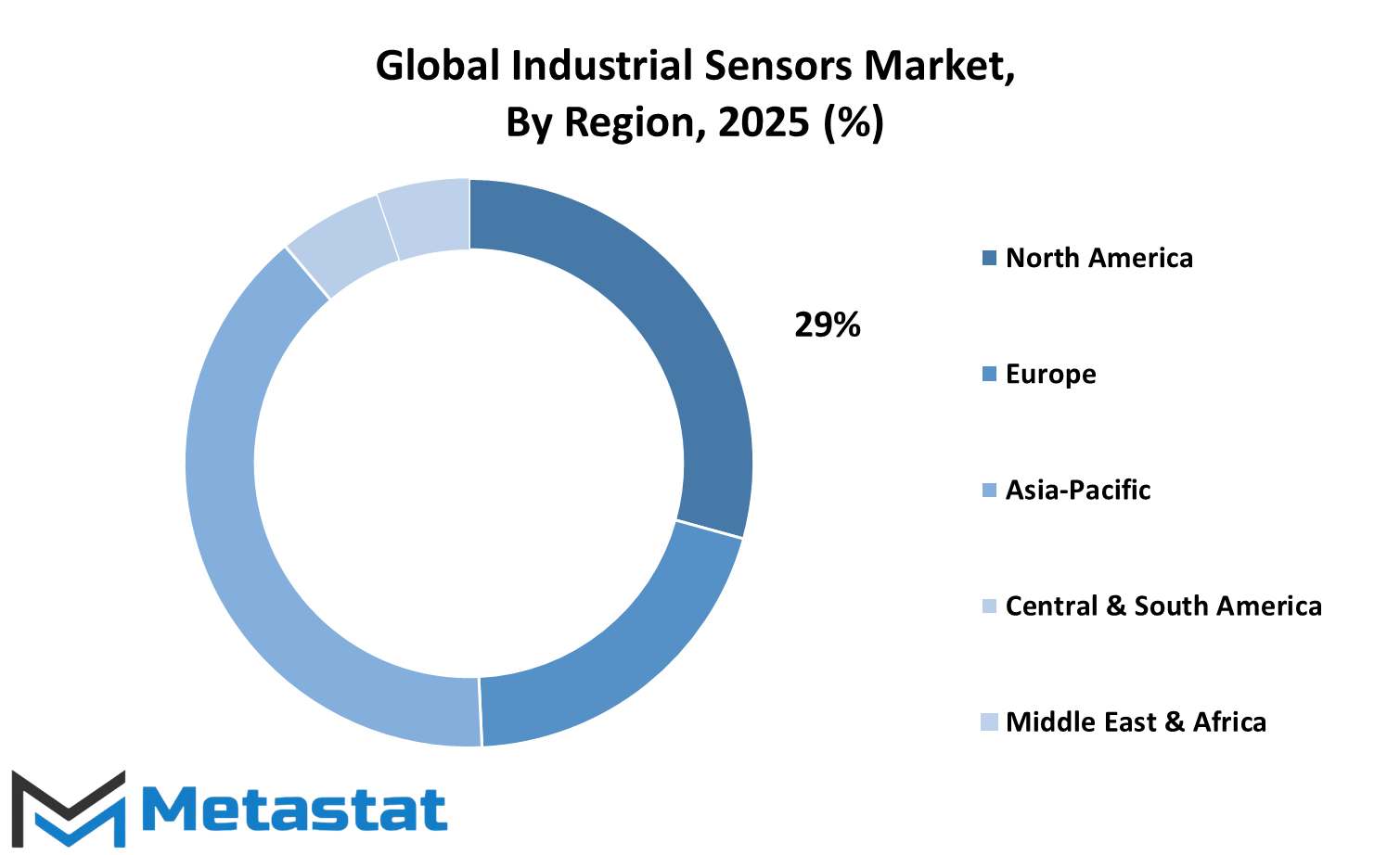
COMPETITIVE PLAYERS
The global industrial sensors market is very likely to record high growth over the next few years driven by technological innovations in the industry and the universal need for greater automation in diversified sectors. Leading the charge are the major players in this market-those who lead the way to the future. These firms hold the top spot in terms of offering the most advanced monitoring, control, and process analysis systems in the industrial markets. This enables firms to work more effectively and safely.
Honeywell International Inc is very famous for holding a robust presence in several lines of businesses across aerospace, building technologies, as well as industrial automation. Honeywell has been putting significant investment in research and development of intelligent sensor technologies that can be employed to drive accuracy, connectivity, and reliability in order to advance applications in industries. Honeywell sensors are found in all applications from energy management to process control, which enables the companies to make decisions based on data regarding the optimization of operations' performance. Among the most significant players in the industrial sensors market is Rockwell Automation, Inc. The company provides smart automation and control solutions, including industrial sensors, as well as a broad portfolio of industrial sensors.
Rockwell's solutions help industries streamline operations, reduce downtime, and make their processes safer. With its central emphasis being on bundling sophisticated technology into one easy package, the company is well-positioned to continue growing and making waves in the market, particularly with more firms starting to use Internet of Things (IoT) solutions. The other leading player in the market is Siemens AG. Siemens is the global automation and digitalization leader with a wide portfolio of sensors across the manufacturing, automotive, and energy industries. Its industrial sensors play a key role in ensuring the smooth performance of automated systems, thus delivering tremendous cost savings and performance improvements to companies all over the world. Sustainability and innovation make it the leading global player at the top of the list. Other industry leaders in the industrial sensor market are Emerson Electric Co., Panasonic Corporation, Qualcomm Technologies, and Hewlett Packard Enterprise Co.
In terms of special competencies, Emerson Electric Co. is distinguished through solutions regarding process automation and high-precision measurements. Panasonic specializes in cutting-edge technologies associated with sensors that form the basis for IoT connectivity as well as smart systems.
The focus of Hewlett Packard Enterprise has been on data-driven insights to optimize industrial processes, which is an extension of the role of sensors in the modern industrial environment. Others who are also quite important players include Bosch Sensortec GmbH, Pepperl+Fuchs SE, Endress+Hauser Group, and SICK AG, who have a diverse portfolio of sensors that aim to keep pace with increasing demands for automation, safety, and operating efficiency among the industries. As the industry is expected to grow, these players will be of critical importance to chart the manner in which it will grow and drive further application of industrial sensors across the industry segments. The global industrial sensors market will witness increased growth, as these businesses continue to find innovative ways of delivering solutions that ensure efficiency, safety, and sustainability across the industry. Their impacts will chart the future of industrial automation, which is exciting for future evolution.
Industrial Sensors Market Key Segments:
By Type
- Level Sensors
- Temperature Sensors
- Gas Sensors
- Pressure Sensors
- Position Sensors
- Humidity & Moisture Sensors
- Flow Sensors
- Image Sensors
- Force Sensors
By Technology
- Micro-Electro-Mechanical Systems (MEMS) Technology
- Complementary Metal Oxide Semiconductor (CMOS) Technology
By Application
- Process Automation
- Discrete Automation
By End-Users
- Manufacturing
- Oil and Gas
- Chemicals
- Pharmaceuticals
- Energy and Power
- Mining
Key Global Industrial Sensors Industry Players
- Honeywell International Inc.
- Rockwell Automation, Inc.
- Siemens AG
- Emerson Electric Co.
- Panasonic Corporation
- Qualcomm Technologies, Inc.
- Hewlett Packard Enterprise Co.
- Bosch Sensortec GmbH
- Pepperl+Fuchs SE
- Endress+Hauser Group
- SICK AG
WHAT REPORT PROVIDES
- Full in-depth analysis of the parent Industry
- Important changes in market and its dynamics
- Segmentation details of the market
- Former, on-going, and projected market analysis in terms of volume and value
- Assessment of niche industry developments
- Market share analysis
- Key strategies of major players
- Emerging segments and regional growth potential



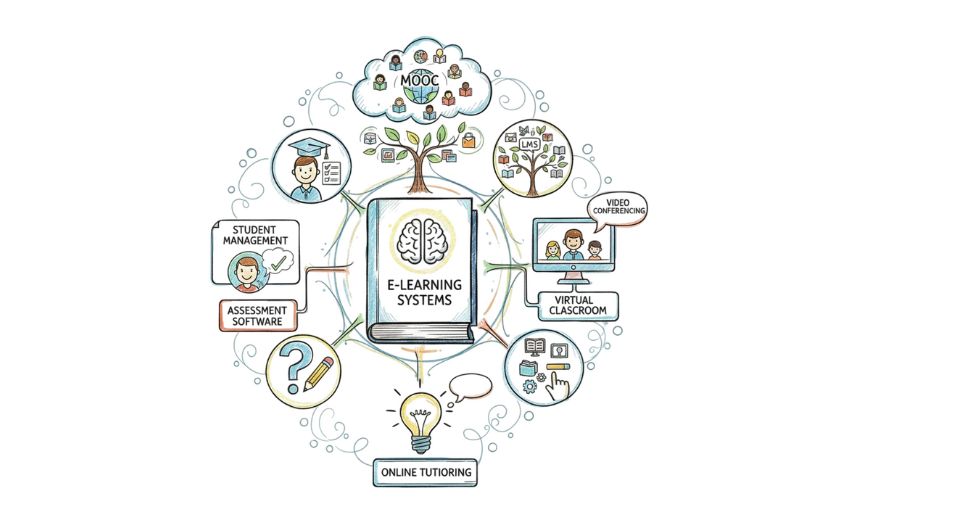
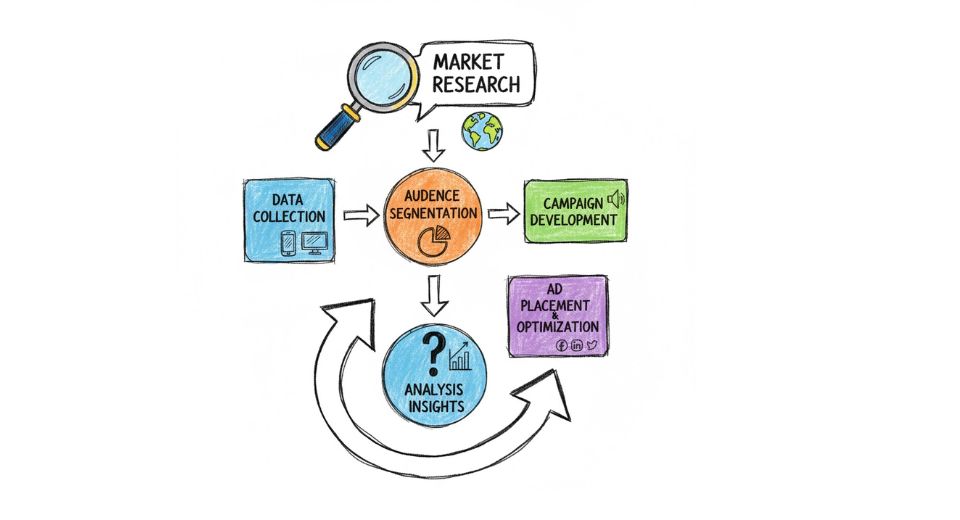
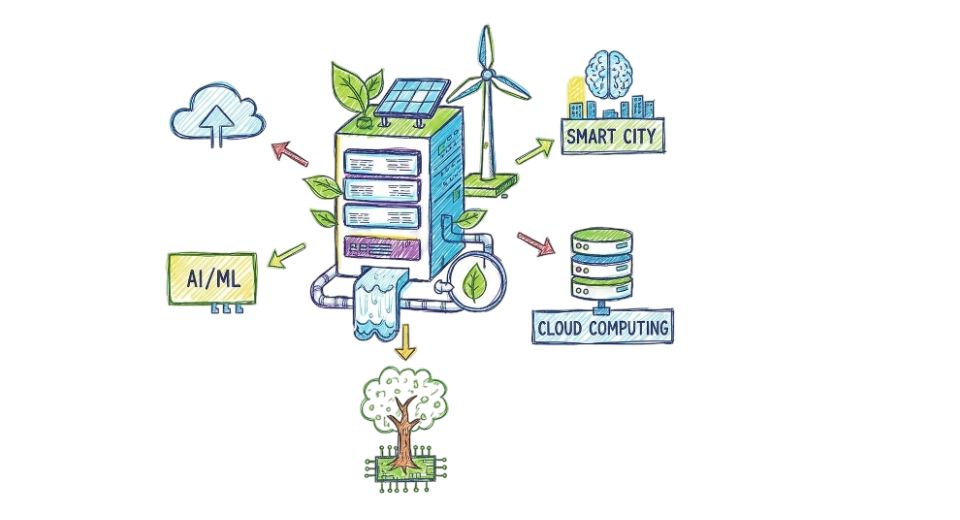
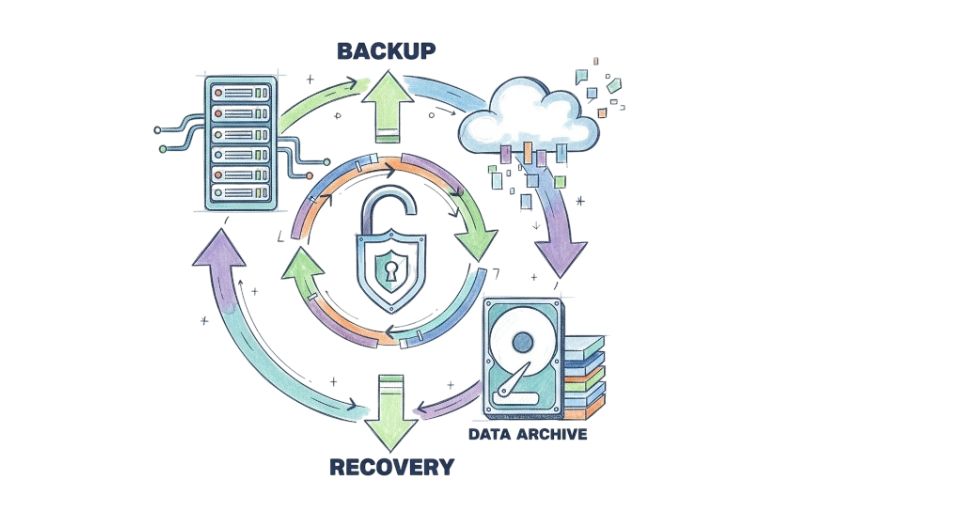

 US: +1 3023308252
US: +1 3023308252






